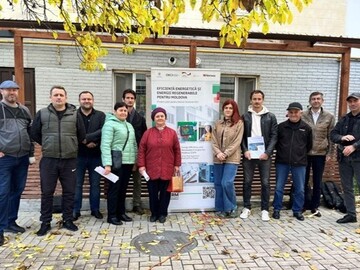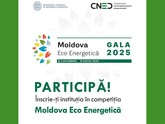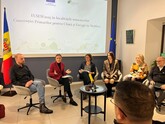
10 small apartment buildings in Moldova were selected for the development of technical design documentation for energy rehabilitation
As announced by the Ministry of Energy and the National Center for Sustainable Energy, the condominium owners' associations managing 15 small apartment buildings selected earlier this year for a free energy audit have received reports developed for their buildings. The energy audit assesses the current energy efficiency of buildings and proposes appropriate rehabilitation measures to improve energy efficiency and reduce electricity costs. Of the 15 buildings inspected, 10 apartment buildings with a total of more than 120 apartments were selected for the next stage – the development of technical project documentation, which condominium owners' associations (COAs) will receive free of charge as part of a Norwegian-funded pilot project for small apartment buildings, implemented as part of the Energy Efficiency and Renewable Energies for Moldova (E4M) program. The measures recommended by the auditors will soon be put to a vote at the COAs general meetings. Depending on the decisions taken, technical experts will conduct an additional assessment of 10 buildings, and architects and engineers will develop the technical documentation necessary to apply to the Residential Energy Efficiency Fund (FEERM) for construction work in the next phase. The proposed measures include thermal insulation of walls and roofs, replacement of old and inefficient windows with new, energy-efficient ones, and installation of photovoltaic panels on the roof to produce renewable energy. This work will significantly reduce energy losses, lower residents' bills, and increase property values. The 10 selected buildings, comprising a total of 120 apartments built before 2005 and managed by COAs, are located in Chisinau, Balti, Edinet, Hincesti, Cahul, and Ceadir -Lunga. The energy audit identified the measures with the greatest potential for energy savings and economic efficiency for each building in accordance with the methodology of the Residential Energy Efficiency Fund (FEERM). The costs of conducting the audit and developing technical projects are fully covered by the pilot project “Energy Efficiency and Renewable Energies for Moldova” (E4M). "As part of this pilot project, we are testing a practical model for energy renovation of small apartment buildings, which can serve as an example for future investment programs. Our goal is to identify technical solutions and financial mechanisms adapted to buildings with a small number of apartments so that they can access funds for renovation," said Ion Muntean, director of the National Center for Sustainable Energy. The 10 buildings selected for the technical documentation development phase were chosen based on a number of criteria, including replication potential, structural integrity, compliance with legislation, and the level of participation of homeowners' associations. The selection also took into account the potential of the buildings to achieve maximum energy savings after the implementation of the proposed measures. Technical documentation is an important step in obtaining FEERM funding necessary to carry out energy renovation work. As noted by the Ministry of Energy and the National Center for Sustainable Energy, the interest shown by homeowners' associations in implementing the measures proposed following the energy audit demonstrates their commitment to reducing energy consumption and modernizing buildings. The active participation of residents and their cooperation with homeowners' associations in condominiums are crucial factors for the success of such projects. The pilot projects highlight the need for further support for homeowners' associations in gaining knowledge about building energy efficiency and its impact, as well as in understanding and accessing advantageous energy rehabilitation financing programs such as FEERM. The experience gained during these pilot projects is extremely important for its dissemination at the national level in the coming years," said Christian Borchard, head of implementation of the Norwegian-funded E4M component within GIZ. This stage marks an important moment in the consolidation of a functional model for the energy rehabilitation of small apartment buildings, which will form the basis for future national programs aimed at improving energy efficiency in the residential sector. //03.11.2025 - InfoMarket







